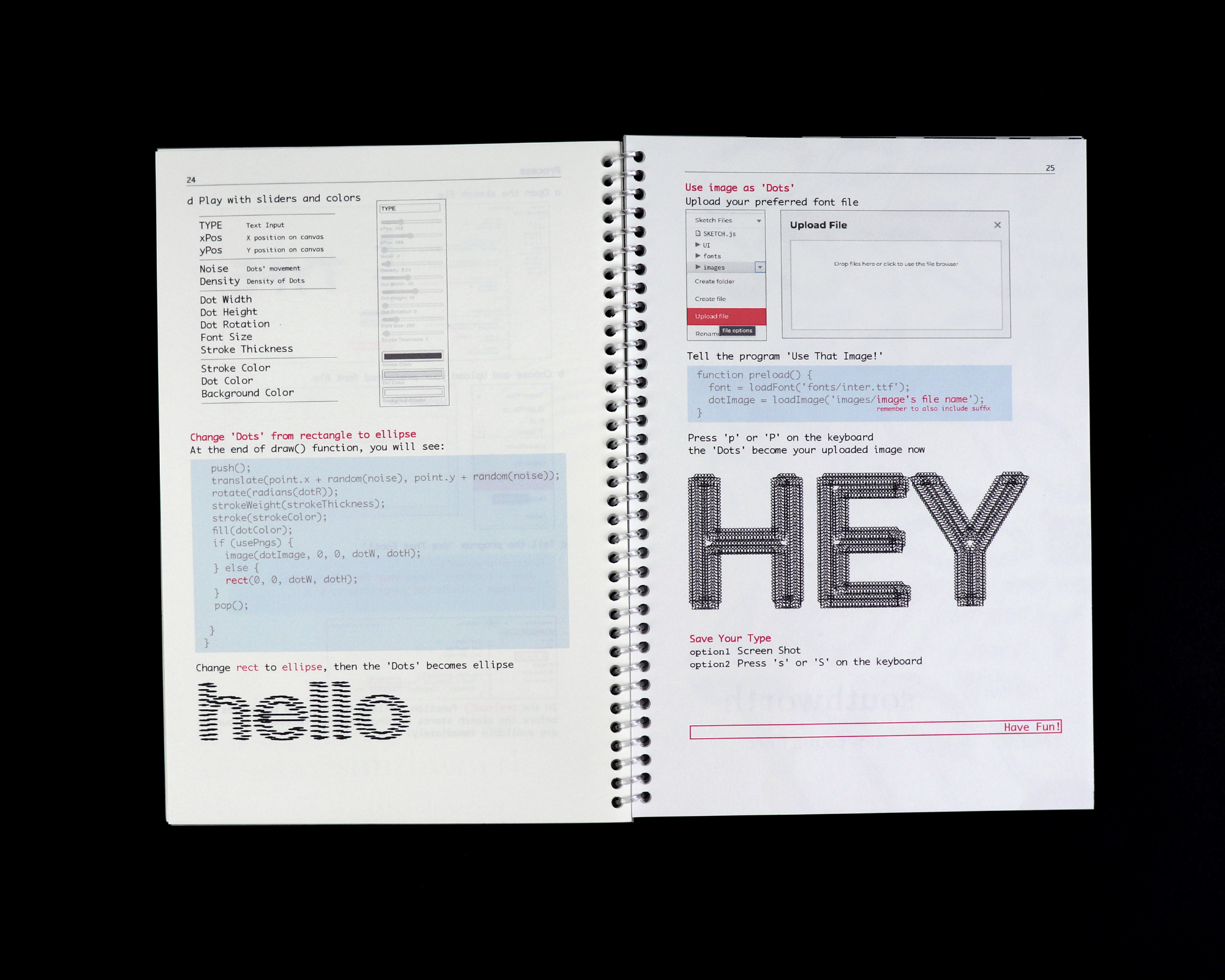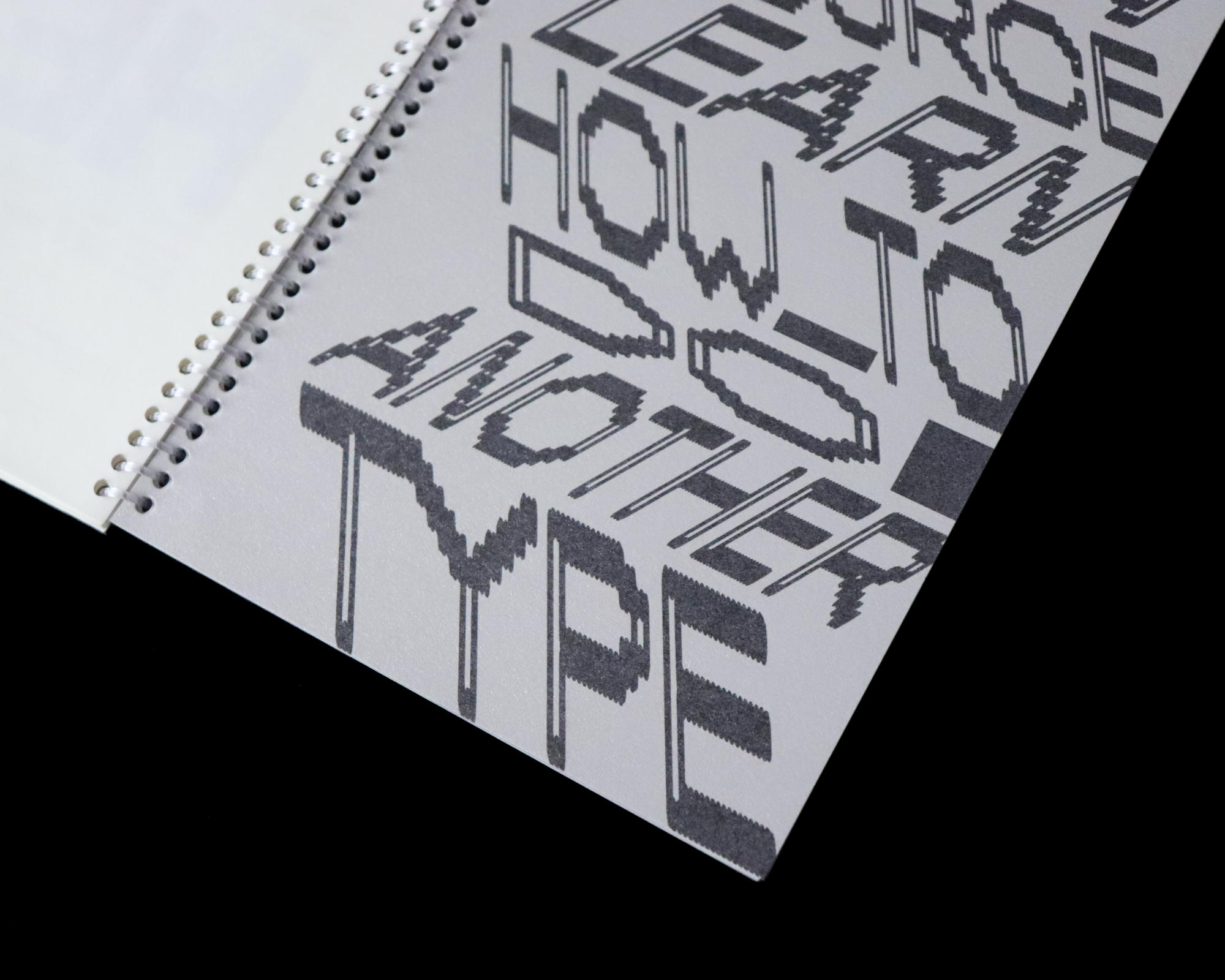Breaking Boundaries: A Non-Coder's Guide to Generative Typography
Niico Tan
Generative typography is an innovative way of creating type that challenges the traditional boundaries of the craft, as a new trajectory in typography design. This thesis argues that generative typography has the potential to be a liberating tool. It explores the history and precedents of generative typography, as well as this type's potential in the context of surveillance and platform capitalism, political oppression, and the relationship between machine and human creativity. This thesis also provides a practical guide to generative typography for non-designers. It uses the free and accessible P5.js platform which allows uploading any font files as the skeletons and allows users to create generative types by adjusting the values of sliders or simply changing the variables inside the codes.

𝙽𝚘𝚗-𝙲𝚘𝚍𝚎𝚛'𝚜 𝙶𝚞𝚒𝚍𝚎 𝚝𝚘 𝙶𝚎𝚗𝚎𝚛𝚊𝚝𝚒𝚟𝚎 𝚃𝚢𝚙𝚘𝚐𝚛𝚊𝚙𝚑𝚢
This is a tutorial book for non-coders, aimed at teaching how to create unique generative typography by simply changing variables in the provided code in @p5xjs All the code can be freely downloaded from my personal website after May 1st. The book is divided into three parts, along with design projects I've created using the code from the book. It explains in the most straightforward language how the code runs, how variables change, and how readers can use them to create various types of fonts. As a designer who once started with a passion for programming, I know the desire for quick mastery of professional knowledge. However, learning the code required for generative typography takes time, and not everyone can immediately adapt to programming language and logic. Moreover, finding relevant tutorials online is often expensive, discouraging many interested individuals. With the intention of providing practical and accessible resources, I have compiled this fun and educational book. I believe that teaching readers to use completely free code to create a myriad of works truly embodies the spirit of open-source.



